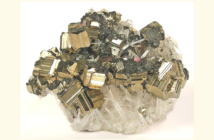We are likely to see more temporarily dried river beds in arid regions, as climate change and drought bite deeper. Europe’s wetter winters are siphoning moisture from somewhere, and that somewhere may include the drier parts of the world. Something similar may have happened when the Sahara last transformed, and savannah became shifting desert sands again.
How Dried River Beds Increase Emissions

We understand how climate change could transform our planet unless we not only stop it, but also reverse it. Global warming is increasing evaporation, causing more rivers to run dry outside of rainy seasons. Now The Economic Times of India reports the cycle could be self-sustaining.
A substantial amount of plant litter may accumulate in dried river beds. “When they flow again, this material can break down rapidly,” a researcher at James Cook University, Australia explains. “We’ve now estimated the potential short-term CO2 emissions during these re-wetting events” and results are startling.
Great World Cities are Facing This New Threat Too

“We believe a single pulse of CO2 emission upon litter rewetting contributes up to 10 per cent of the daily CO2 emission,” Nathan Waltham continues. “When we compare them to perennial rivers and streams, particularly in temperate climates.”
We have witnessed how Cape Town almost ran dry before rains returned after three years. First, the rain fell less, then it ceased, and then the rivers feeding dams dried up. Much precious water sank away when rain returned, before the dried river beds flowed again.
This is not something the northern hemisphere can ignore. Moscow, London, and Miami are facing similar threats. Yet we continue to increase the population of these cities. Imagine the result of an unrelenting, three-year severe drought in these places.
Related
Effects of Climate Change: Fast Evaporation
Great World Cities Running Out of Water
Preview Image: Tadrart Acacus Desert in Western Libya (Part of the Sahara)




